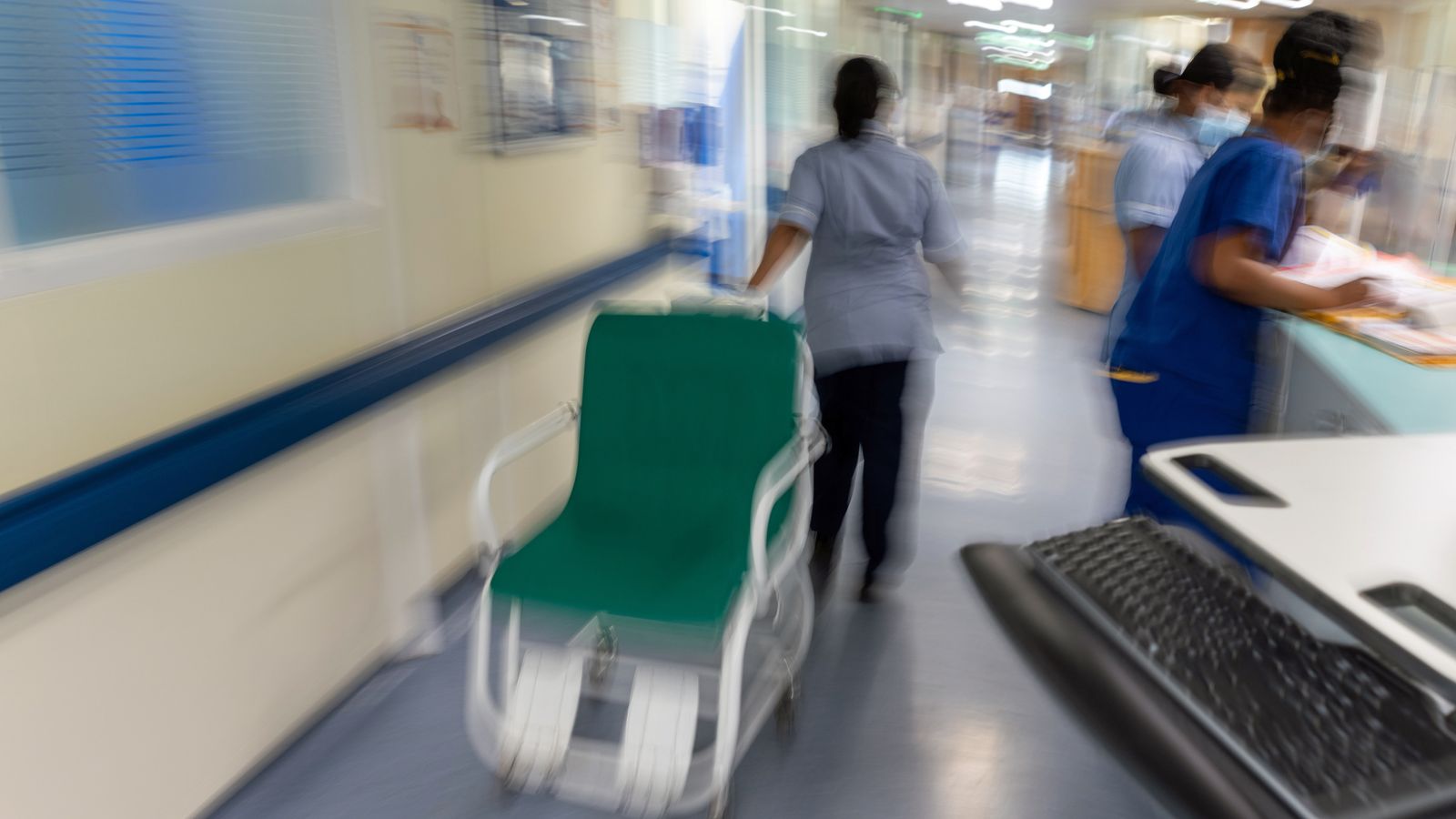The number of people in England waiting to start routine hospital treatment has hit a record high.
An estimated 7.75 million people were waiting to start treatment at the end of August, up from 7.68 million in July.
It is the highest number since records began in August 2007.
Also increasing is the time people have to wait to get seen – 8,998 people in England were waiting more than 18 months for routine hospital treatment at the end of August, up from 7,289 at the end of July.
And more than 396,000 patients have been waiting longer than a year to begin treatment since the end of August, a rise since the end of July.
Meanwhile, people waiting for longer than 12 hours in A&E departments in England from a decision to admit to actually being admitted was 33,107 in September – a significant drop from 54,573 in December 2022 – but still higher than this August.
Be the first to get Breaking News
Install the Sky News app for free
The figures come despite the government’s pledge to slash waiting list times as one of its key priorities.
Three patients died after colonoscopy care failures, NHS Greater Glasgow and Clyde admits
RCN calls for ‘culture change’ to make Labour’s NHS overtime plan work
Labour pledges 700,000 extra appointments and supervised toothbrushing to ‘rescue dentistry’
It blames ongoing doctor strikes as a significant factor contributing to the delays, while they argue for better pay and working conditions.
The aim is to eliminate all waits of over a year by March 2025.
An NHS recovery plan announced in January set a target of 76% of patients attending A&E to be admitted, transferred or discharged within four hours by March 2024, although some have labelled this as ambitious.
Professor Peter Friend, vice president of the Royal College of Surgeons of England, said: “Increased demand, record staff vacancies and industrial action all continue to hold back recovery efforts.
“Whilst NHS staff continue to work hard to reduce waiting lists, this is happening in extremely challenging circumstances – and that is before winter pressures hit.
Please use Chrome browser for a more accessible video player
“The government’s recent financial boost to help the health service this winter is very much welcome. However, the prime minister’s key pledge of reducing the size of the waiting list by March 2024 is looking more and more in doubt.”
He urged the government to carry on funding surgical hubs in areas with long waits for operations.
Read more:
Doctors’ strike ‘causing significant risk to patients’, NHS leaders warn
Labour pledges 700,000 extra appointments and supervised toothbrushing
Cancer waiting times
Data also showed 23,809 patients in England were waiting longer than 62 days since an urgent GP referral for suspected cancer at the beginning of September, up more than 2,000 since the beginning of August.
Most of these patients are waiting for a diagnostic test and don’t have cancer, while around one in seven do suffer from the disease and are waiting for treatment.
Additionally, 62.8% of cancer patients who had their first treatment in August after an urgent GP referral had waited less than two months, up slightly from 62.6% in July. The target is 85%.
And patients urgently referred for suspected cancer who were diagnosed or had cancer ruled out within 28 days, has fallen from last month.
However, more urgent cancer referrals have been made by GPs in August (267,555) – up 1% in July and 4% since figures in August 2022.
Cancer Research UK chief executive Michelle Mitchell said the waiting lists for cancer treatment were “not new”.
Ms Mitchell said: “All cancer waiting time targets have once again been missed in England despite the best efforts of NHS staff.
“Behind these figures are people waiting anxiously for a cancer diagnosis, and patients left uncertain about when they’ll get the treatment they urgently need.
“Although strike action has disrupted services, the waiting lists that we see in England today are not new.”
Virtual wards ‘delivered’
NHS England said it had delivered on its ambition to roll out 10,000 virtual ward beds by the end of September.
More than 240,000 patients have now been treated on them, it said, adding that research shows people who are treated at home recover at the same rate or faster than those in hospital.
It added that September was the busiest ever for A&E, and despite six days of industrial action in August, the NHS treated 10% more patients (1,422,225) compared to the same month pre-pandemic (1,292,163 in August 2019).








